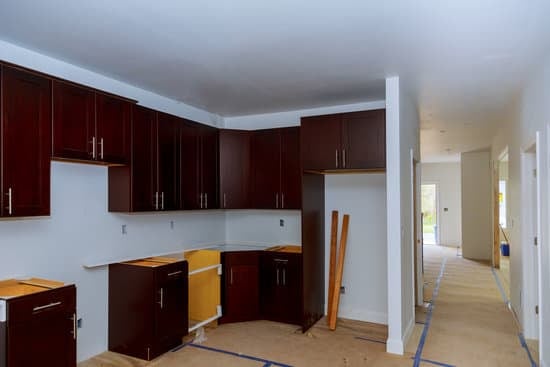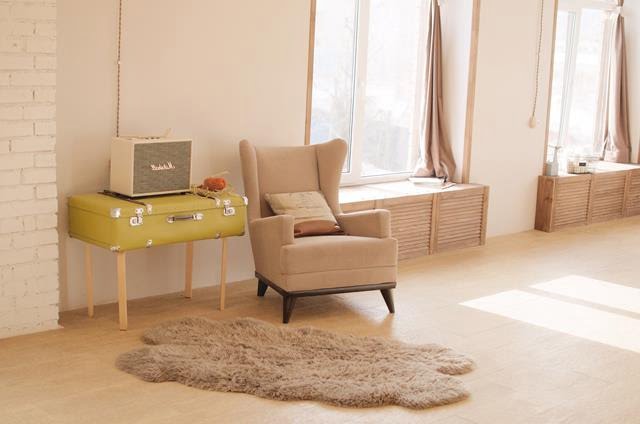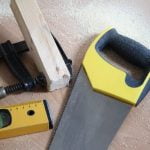Are you considering making improvements to your home but unsure of how to finance it? If so, you’re in the right place. In this article, we will explore the various aspects of obtaining a home improvement loan. We will delve into the different types of loans available, how much you can borrow, the application process, and the costs associated with borrowing $25,000 for your project.
Home improvements can be costly, and sometimes they may not fit into your current budget. This is where a home improvement loan comes into play. But how much would a home improvement loan of 25,000 really cost you? What factors affect the amount you can borrow? These are some of the questions we will address in this comprehensive guide.
Whether you’re planning on renovating your kitchen or adding an extra bedroom, understanding how to finance your project is crucial. Our aim is to provide you with the necessary information to make informed decisions when it comes to obtaining a home improvement loan. So, let’s dive in and explore all the essential details about financing your home improvement project.
Exploring the Options
When considering a home improvement project, it’s important to explore the different types of home improvement loans available to homeowners. These loans can provide the necessary funds to renovate, repair, or upgrade your home. There are several options to choose from, each with its own set of terms and conditions.
One common option is a home equity loan, which allows homeowners to borrow against the equity in their homes. This type of loan typically offers a fixed interest rate and a lump sum payment. Another option is a home equity line of credit (HELOC), which also allows homeowners to borrow against their home’s equity but functions more like a credit card with a revolving line of credit.
Additionally, personal loans can be used for home improvement projects and are unsecured, meaning they don’t require collateral such as a house or car. These loans often have higher interest rates than home equity loans but may be more accessible for those who don’t have substantial equity in their homes.
A third option is a cash-out refinance, where homeowners refinance their existing mortgage for more than the amount owed and receive the difference in cash. Each type of loan has its own advantages and disadvantages, so it’s important to carefully consider your financial situation and goals before choosing the best one for your needs.
| Types of Home Improvement Loans | Description |
|---|---|
| Home Equity Loan | Borrow against the equity in your home with a fixed interest rate and lump sum payment. |
| Home Equity Line of Credit (HELOC) | Borrow against your home’s equity with a revolving line of credit similar to a credit card. |
| Personal Loan | An unsecured loan that can be used for home improvement projects but may have higher interest rates. |
| Cash-Out Refinance | Refinance your existing mortgage for more than you owe and receive the difference in cash. |
Factors Affecting Loan Amount
When considering a home improvement loan, it is important to understand the factors that can affect the amount you are able to borrow. Several key factors come into play when determining how much you can borrow for your home improvement project:
1. Credit Score: Your credit score plays a significant role in determining the amount you can borrow for a home improvement loan. Lenders use your credit score to assess your creditworthiness and ability to repay the loan. A higher credit score may result in a larger loan amount, while a lower credit score could limit your borrowing options.
2. Income and Debt-to-Income Ratio: Lenders will also consider your income and debt-to-income ratio when determining the loan amount. A higher income and lower debt-to-income ratio may increase the amount you can borrow, as it indicates financial stability and the ability to manage additional debt.
3. Loan-to-Value Ratio: The loan-to-value (LTV) ratio is another important factor that lenders consider. This ratio is calculated by dividing the amount of the loan by the appraised value of the property. A lower LTV ratio typically results in a higher loan amount, as it represents less risk for the lender.
Considering these factors, if you were to apply for a home improvement loan of $25,000, your eligibility would depend on your individual financial situation including your credit score, income, and debt-to-income ratio. It’s crucial to ensure that these factors are in good standing before applying for a home improvement loan of this size.
The Application Process
Research and Compare Lenders
Before applying for a home improvement loan of $25,000, it’s essential to research and compare different lenders to find the best option for your financial situation. Take the time to look into traditional banks, credit unions, online lenders, and even government programs that offer home improvement loans. Compare interest rates, fees, and repayment terms to determine which lender can provide you with the most favorable loan terms.
Gather Necessary Documents
Once you’ve selected a lender, it’s time to gather all the necessary documents for the loan application process. Generally, you will need to provide proof of income, employment verification, tax returns, credit history, and details about the home improvement project you plan to undertake. Additionally, some lenders may require an appraisal to assess the current value of your home.
Submit Your Application
After gathering all the required documents, it’s time to submit your application for a $25,000 home improvement loan. This can typically be done online or in-person at a bank or credit union branch. Make sure to double-check all the information provided on your application before submission to minimize any potential delays in the approval process. Once your application is submitted, be prepared to wait for a decision from the lender regarding your loan approval and terms.
By following these steps in the application process for a home improvement loan of $25,000, you can increase your chances of securing financing for your renovation project while also ensuring that you are well-prepared for this financial commitment.
Understanding Interest Rates
When considering a home improvement loan of $25,000, it’s essential to understand how much the loan will cost in interest. Interest rates can vary depending on the type of loan, the lender, and your credit score. The higher the interest rate, the more you will end up paying over the life of the loan.
Typically, interest rates for home improvement loans range from 5% to 15%. The actual rate you receive will depend on factors such as your credit score, income, and debt-to-income ratio. It’s important to shop around and compare offers from different lenders to ensure you get the best possible rate.
To calculate how much a $25,000 home improvement loan will cost in interest, you can use an online loan calculator. By entering the loan amount, interest rate, and term of the loan, you can determine how much you’ll pay in total interest over the life of the loan.
It’s also important to consider how different repayment plans may affect the total cost of your loan. A shorter repayment term may result in higher monthly payments but lower overall interest costs, while a longer repayment term may have lower monthly payments but higher overall interest costs.
| Interest Rate | Total Interest Paid |
|---|---|
| 5% | $2,382 |
| 10% | $4,431 |
| 15% | $6,786 |
Repayment Plans
When taking out a home improvement loan, one of the most important factors to consider is how you will repay the borrowed amount. There are several repayment plans available, and choosing the right one for your budget is crucial to ensure that you can manage the payments effectively.
Fixed-Rate Repayment
One common option for repaying a home improvement loan is a fixed-rate repayment plan. With this type of plan, your monthly payments will remain consistent throughout the term of the loan. This can make it easier to budget for since you’ll know exactly how much you need to set aside each month for your loan payment. However, it’s important to consider whether the interest rate offered with a fixed-rate plan is competitive compared to other options.
Variable-Rate Repayment
Another option to consider is a variable-rate repayment plan. With this type of plan, the interest rate on your loan can fluctuate based on market conditions. While this can result in lower initial payments if interest rates are low, there’s also the risk that your payments could increase if rates rise. It’s essential to carefully assess your financial situation and tolerance for potential payment fluctuations before opting for a variable-rate repayment plan.
Interest-Only Repayment
Some lenders also offer interest-only repayment plans, where you only pay the interest accrued on the loan for a certain period before beginning to repay the principal amount. While this can result in lower initial payments, it’s important to note that you will eventually need to start repaying the principal as well. It’s essential to have a clear plan for tackling the principal balance when considering an interest-only repayment plan.
Overall, when exploring repayment plans for a home improvement loan of $25,000, it’s crucial to carefully assess your financial situation and evaluate which option aligns best with your budget and preferences.
Benefits and Risks
When considering taking out a home improvement loan of $25,000, it’s important to weigh the potential benefits and risks that come with this decision. One of the primary advantages of obtaining a home improvement loan is the ability to fund necessary home renovations or repairs without having to use personal savings.
This can be especially beneficial for homeowners who may not have the upfront cash available to cover the costs of larger scale projects. Additionally, depending on the type of loan obtained, the interest paid on the loan may be tax-deductible, providing potential financial benefits in the long run.
On the flip side, there are also inherent risks in taking out a home improvement loan. One of the main drawbacks is the added debt burden that comes with borrowing a significant sum of money. For some homeowners, this can create financial strain and impact their overall budget and ability to manage monthly payments. It’s crucial to carefully consider whether taking on this additional debt is feasible and realistic based on individual financial circumstances.
Furthermore, there is also the risk of over-improving your home with borrowed funds. While certain renovations can increase a home’s value, it’s important to assess whether investing $25,000 into specific improvements will yield a return on investment when it comes time to sell the property. Understanding these risks is essential in making an informed decision about whether or not to take out a home improvement loan for $25,000.
Tips for Making the Most of Your Home Improvement Loan
If you are considering taking out a home improvement loan of $25,000, it’s important to make the most of the funds to ensure that you achieve your renovation goals within budget. Whether you are looking to remodel your kitchen, add a new addition to your home, or make energy-efficient upgrades, there are several tips for maximizing the 25,000 loan amount.
One way to make the most of your home improvement loan is to create a detailed budget for your renovation project. Before diving into any renovations, it’s essential to outline all anticipated costs associated with the project. This includes materials, labor, permits, and any unexpected expenses that may arise. By closely monitoring your budget and sticking to it as much as possible, you can ensure that the $25,000 loan amount is used effectively and efficiently.
Another tip for maximizing your home improvement loan is to prioritize renovations that will add value to your home. This not only includes cosmetic upgrades but also functional improvements that will make your home more desirable in the long run. For example, investing in energy-efficient windows or upgrading plumbing and electrical systems can increase the resale value of your home while also improving its overall livability.
Lastly, consider doing some of the work yourself if you have the skills and time. While certain projects may require professional help, such as electrical or plumbing work, there are many tasks like painting and landscaping that homeowners can undertake themselves. By putting in some sweat equity, you can stretch the $25,000 loan amount further and potentially take on additional projects that enhance your living space without exceeding your budget.
Conclusion
In conclusion, taking out a home improvement loan of 25,000 can be a great way to fund your renovation or remodeling project. By understanding the need for the loan and exploring the different options available, you can make an informed decision about how much you should borrow. Factors such as your credit score, income, and the value of your home will all play a role in determining how much you can borrow for your home improvement project.
Additionally, it’s essential to consider the interest rates and repayment plans associated with a 25,000 home improvement loan. By carefully comparing different lenders and loan terms, you can ensure that you’re getting the best deal possible and that the loan is manageable within your budget. It’s also important to weigh the benefits and risks of taking out a home improvement loan to determine if it’s the right choice for you.
Ultimately, maximizing the 25,000 loan amount requires careful planning and budgeting. By prioritizing your needs, obtaining multiple quotes from contractors, and being realistic about what you can afford, you can make the most of your home improvement loan. With this information in mind, you can confidently move forward with your renovation project knowing that you’ve made an informed decision about how much to borrow for your home improvement needs.
Frequently Asked Questions
What Is the Monthly Payment on a $25 000 Loan?
The monthly payment on a $25,000 loan depends on the interest rate and the length of the loan term. To calculate the monthly payment, you would need to use a loan calculator or consult with a financial institution.
What Is the Average Length of a Home Improvement Loan?
The average length of a home improvement loan can vary depending on the lender and the borrower’s financial situation. However, these types of loans typically have terms ranging from two to seven years, allowing borrowers time to pay off the loan while still affording their other expenses.
What Is the Interest Rate on $25000?
The interest rate on a $25,000 loan also depends on various factors such as the borrower’s credit score, the type of loan, and current market conditions. Typically, personal loans have interest rates ranging from 6% to 36%, but again, it is best to consult with a lender for specific rates based on individual circumstances.

I’m thrilled to have you here as a part of the Remodeling Top community. This is where my journey as an architect and remodeling enthusiast intersects with your passion for transforming houses into dream homes.





